#satoshi miyashita
Explore tagged Tumblr posts
Text
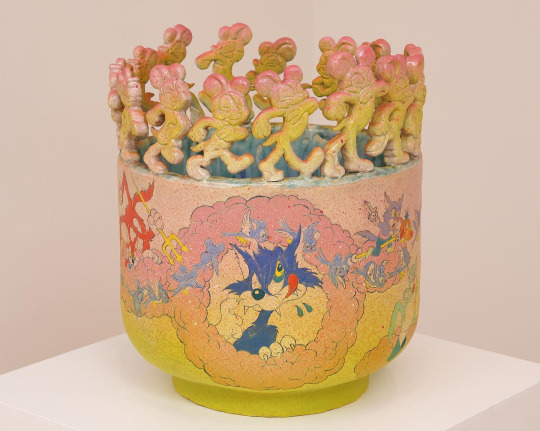

spectrum tea bowls by satoshi miyashita, 2023, ceramic glaze, 46 x 39 x 39 centimeters
4K notes
·
View notes
Text
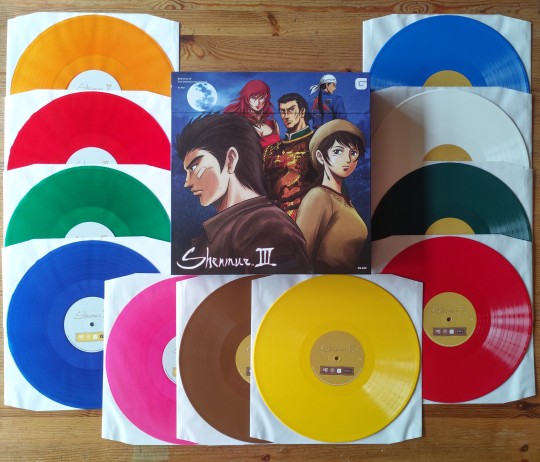
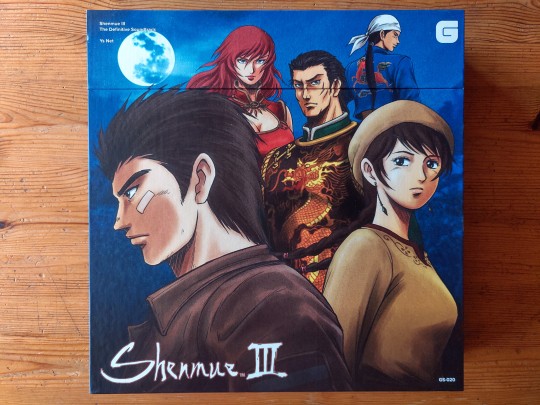


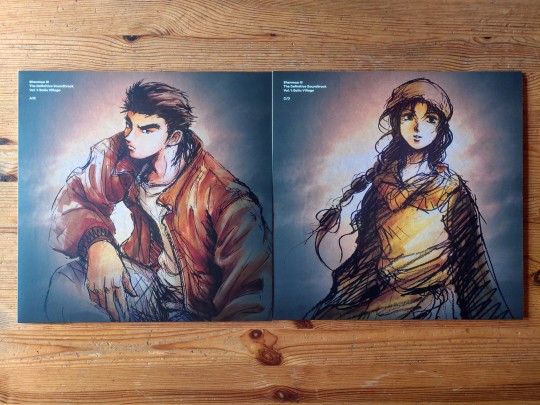


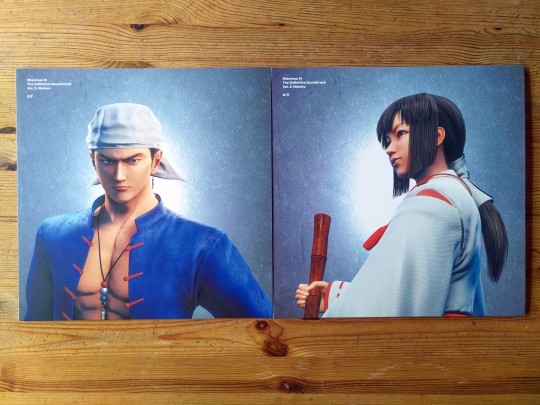

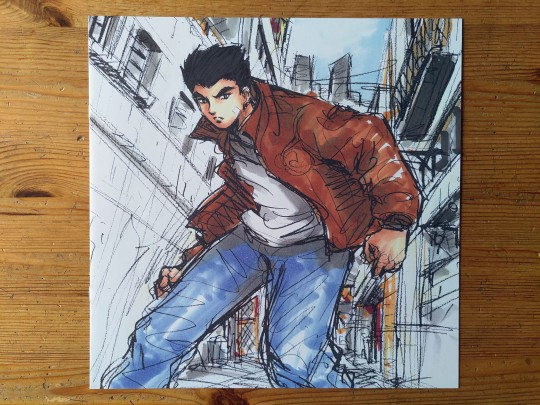

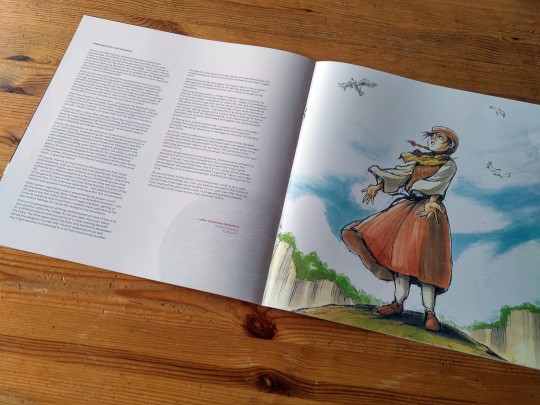
Ys Net - Shenmue III The Definitive Soundtrack | Brave Wave | 2022 | Orange Translucent + Red Translucent + Green Translucent + Blue Translucent + Pink Translucent + Brown + Yellow + Blue + White + Green + Red
#ys net#ryuji iuchi#takenobu mitsuyoshi#osamu murata#satoshi miyashita#shenmue iii#brave wave#vinyl#colored vinyl#lp#music#records#record collection#vgm#video game music#soundtrack#sega#shenmue#yu suzuki
19 notes
·
View notes
Text




Genderbend Nijigasaki I made days ago.
Might post Aqours and μ's one later.
#love live#nijigasaki school idol club#genderbend#ayumu uehara#Haruka Konoe#ai miyashita#setsuna yuki#lanzhu zhong#karin asaka#emma verde#kanata konoe#mia taylor#shizuku osaka#kasumi nakasu#rina tennoji#shioriko mifune#kaoruko mifune#misato kawamoto#isla hastie#haruka konoe#yuu takasaki#nana nakagawa#yuuto takasaki#hanzo uehara#satoshi uehara#koiichi miyashita#setsuhito yuuki#hitorou nakagawa#li shuai zhong#keisuke nakasu
10 notes
·
View notes
Text
literally exclusively been listening to 80s Japanese ambient albums lately to feel like im living a cinematic truman show-esque experience
1 note
·
View note
Text
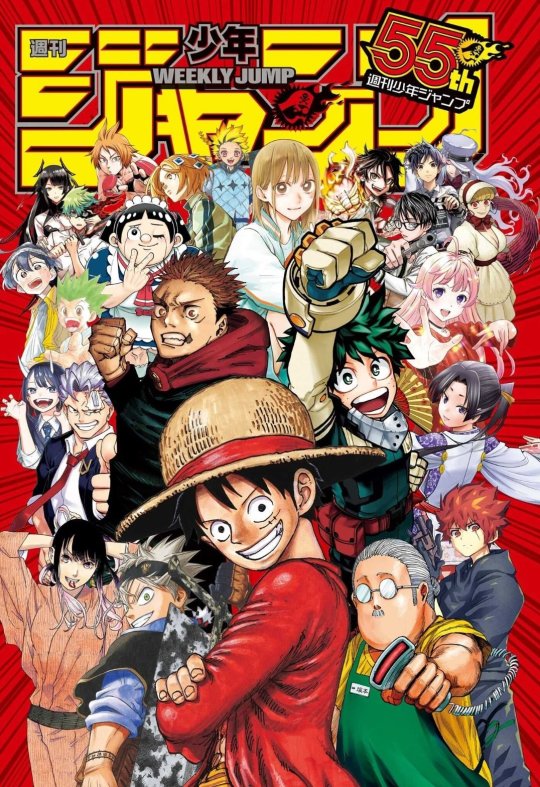
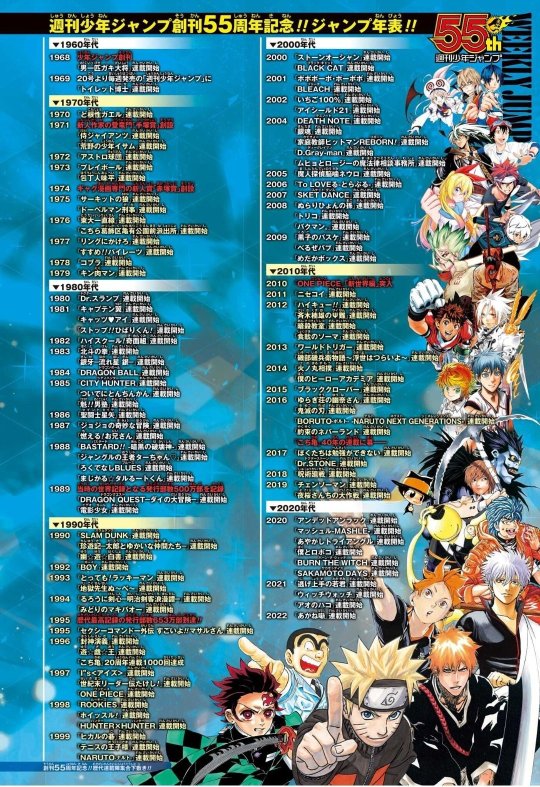
Weekly Shonen Jump 55th anniversary appendix in Weekly Shonen Jump 2023 issue #33
1968 Weekly Shonen Jump Issue #1 Otoko Ippiki Gaki-Daisho by Hiroshi Motomiya 1969 Dr. Toilet by Kazuyoshi Torii 1970 The Gutsy Frog by Yasumi Yoshizawa 1971 Tezuka Manga Award 1st Edition Samurai Giants by Ikki Kajiwara & Ko Inoue Boy of the Wilderness Isamu by Soji Yamakawa & Noboru Kawasaki 1972 Astro Kyudan by Shiro Tōzaki & Norihiro Nakajima 1973 Play Ball by Akio Chiba Hochonin Ajihei by Jiro Gyu & Jo Big 1974 Akatsuka Manga Award 1st Edition 1975 The Circuit Wolf by Satoshi Ikezawa Doberman Deka by Buronson & Shinji Hiramatsu 1976 Toudai Icchokusen by Yoshinori Kobayashi Kochikame by Osamu Akimoto 1977 Ring ni Kakero by Masami Kurumada Susume!! Pirates by Hisashi Eguchi 1978 Cobra by Buichi Terasawa 1979 Kinnikuman by Yudetamago 1980 Dr. Slump by Akira Toriyama 1981 Captain Tsubasa by Yoichi Takahashi Cat's Eye by Tsukasa Hojo Stop!! Hibari-kun! by Hisashi Eguchi 1982 High School! Kimengumi by Motoei Shinzawa 1983 Fist of the North Star by Buronson & Tetsuo Hara Ginga -Nagareboshi Gin- by Yoshihiro Takahashi 1984 DRAGON BALL by Akira Toriyama 1985 City Hunter by Tsukasa Hojo Miraculous Tonchinkan by Koichi Endo Sakigake!! Otokojuku by Akira Miyashita 1986 Saint Seiya by Masami Kurumada 1987 JoJo's Bizarre Adventure by Hirohiko Araki The Burning Wild Man by Tadashi Sato 1988 Bastard!! by Kazushi Hagiwara Jungle King Tar-chan by Masaya Tokuhiro Rokudenashi BLUES by Masanori Morita Magical Taluluto by Tatsuya Egawa 1989 Weekly Shonen Jump reaches 5.000.000 copies in circulation Dragon Quest: The Great Adventure of Dai by Riku Sanjo & Koji Inada Video Girl Ai by Masakazu Katsura 1990 SLAM DUNK by Takehiko Inoue Chinyuki by Man Gataro Yu Yu Hakusho by Yoshihiro Togashi 1992 Hareluya II Boy by Haruto Umezawa 1993 Tottemo! Luckyman by Hiroshi Gamo Hell Teacher Nube by Makura Sho & Takeshi Okano 1994 Midori no Makibao by Tsunomaru Rurouni Kenshin by Nobuhiro Watsuki 1995 Weekly Shonen Jump reaches 6.530.000 copies in circulation Sexy Commando Gaiden: Sugoi yo!! Masaru-san by Kyosuke Usuta 1996 Hoshin Engi by Ryu Fujisaki Yu-Gi-Oh! by Kazuki Takahashi Kochikame 20th Anniversary & Chapter 1000 1997 I's by Masakazu Katsura Seikimatsu Leader den Takeshi! by Mitsutoshi Shimabukuro ONE PIECE by Eiichiro Oda 1998 Rookies by Masanori Morita Whistle! by Daisuke Higuchi HUNTERXHUNTER by Yoshihiro Togashi 1999 Hikaru no Go by Yumi Hotta & Takeshi Obata The Prince of Tennis by Takeshi Konomi NARUTO by Masashi Kishimoto 2000 JoJo's Bizarre Adventure: Stone Ocean by Hirohiko Araki BLACK CAT by Kentaro Yabuki 2001 Bobobobo Bobobo by Yoshio Sawai BLEACH by Tite Kubo 2002 Strawberry 100% by Mizuki Kawashita Eyeshield 21 by Riichiro Inagaki & Yusuke Murata 2004 Death Note by Tsugumi Ohba & Takeshi Obata Gintama by Hideaki Sorachi Katekyo Hitman Reborn! by Akira Amano D.Gray-man by Katsura Hoshino Muhyo & Roji's Bureau of Supernatural Investigation by Yoshiyuki Nishi 2005 Neuro: Supernatural Detective by Yusei Matsui 2006 To Love Ru by Saki Hasemi & Kentaro Yabuki 2007 Sket Dance by Kenta Shinohara 2008 Nura: Rise of the Yokai Clan by Hiroshi Shiibashi Toriko by Mitsutoshi Shimabukuro Bakuman. by Tsugumi Ohba & Takeshi Obata 2009 Kuroko's Basketball by Tadatoshi Fujimaki Beelzebub by Ryuhei Tamura Medaka Box by Nisio Isin & Akira Akatsuki 2010 ONE PIECE New World Begins 2011 Nisekoi by Naoshi Komi 2012 Haikyu!! by Haruichi Furudate The Disastrous Life of Saiki K. by Shuichi Aso Assassination Classroom by Yusei Matsui Food Wars: Shokugeki no Soma by Yuto Tsukuda & Shun Saeki 2013 World Trigger by Daisuke Ashihara Isobe Isobee Monogatari by Ryo Nakama 2014 Hinomaru Zumo by Kawada My Hero Academia by Kohei Horikoshi 2015 Black Clover by Yuki Tabata 2016 Yuuna and the Haunted Hot Springs by Tadahiro Miura Kimetsu no Yaiba by Koyoharu Gotouge BORUTO by Mikio Ikemoto & Ukyo Kodachi The Promised Neverland by Kaiu Shirai & Posuka Demizu Kochikame 40th Anniversary and Serialization End 2017 We Never Learn by Taishi Tsutsui Dr. STONE by Riichiro Inagaki & Boichi 2018 Jujutsu Kaisen by Akutami Gege
2019 Chainsaw Man by Tatsuki Fujimoto Mission: Yozakura Family by Hitsuji Gondaira 2020 Undead Unluck by Yoshifumi Tozuka MASHLE by Hajime Komoto Ayakashi Triangle by Kentaro Yabuki Me & Roboco by Shuhei Miyazaki BURN THE WITCH by Tite Kubo SAKAMOTO DAYS by Yuto Suzuki 2021 The Elusive Samurai by Yusei Matsui WITCH WATCH by Kenta Shinohara Blue Box by Kouji Miura 2022 Akane Banashi by Yuki Suenaga & Takamasa Moue
#Weekly Shone Jump#One Piece#Dragon Ball#Naruto#Slam Dunk#KochiKame#Demon Slayer#Bleach#JoJo's Bizarre Adventure#Fist of the North Star#My Hero Academia#Hunter x Hunter#Jujutsu Kaisen#Yu Yu Hakusho#Kinnikuman#Rurouni Kenshin#The Prince of Tennis#Rokudenashi Blues#Gintama#Haikyu!!#manga#long post#late post
221 notes
·
View notes
Text

spectrum tea bowls by satoshi miyashita, 2023, ceramic glaze, 46 x 39 x 39 centimeters

42 notes
·
View notes
Text
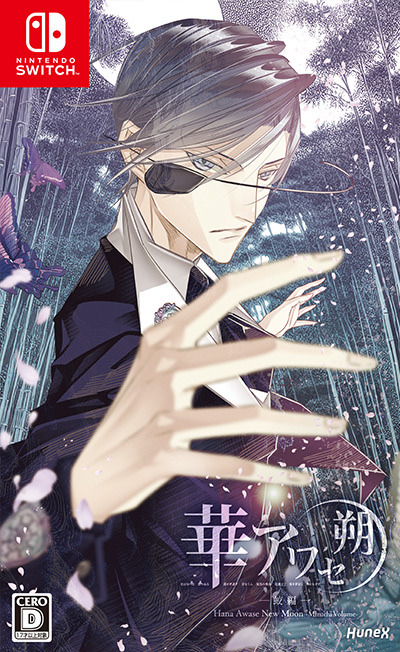
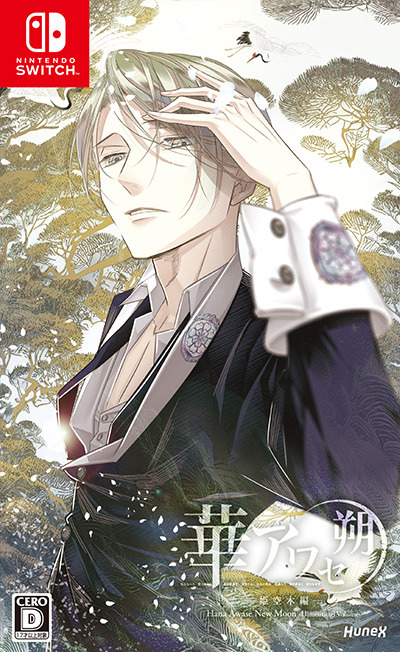

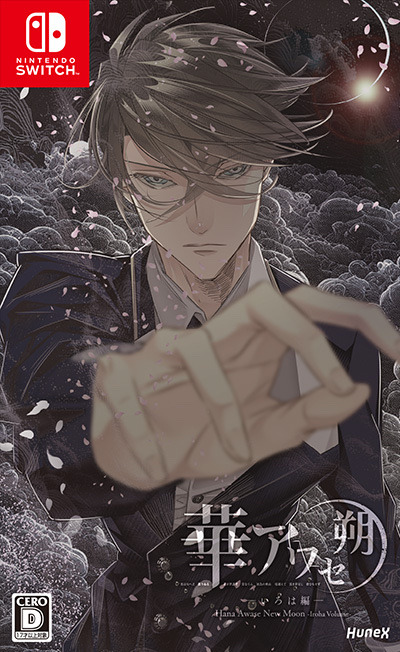
Hana Awase New Moon (EN, CN, ZH, JP) for Nintendo Switch : October 26, 2023
Hana Awase Saku โอโตเมะเกมฮานาอาวาเซะ เวอร์ชันแปลอังกฤษ ทั้งหมด 4 เกม บนนินเทนโด้สวิทช์ 26 ตุลาคมนี้
━━━━━━━━━━━━━━━
Title: Hana Awase New Moon
By: WoGa, dramatic create
Platform: Nintendo Switch
Languages: English, Japanese, Traditional Chinese, Simplified Chinese (Japanese Voiced)
Website: https://dramaticcreate.com/hana-saku/
━━━━━━━━━━━━━━━
Release date: October 26, 2023
Physical Version : Japan and Asia.
Digital Version : upcoming (available outside of Japan)
● CAST
Iroha CV: Terashima Takuma #寺島拓篤
Mizuchi CV: Fukuyama Jun #福山潤
Karakurenai CV: Hino Satoshi #日野聡
Himeutsugi CV: Tachibana Shinnosuke #立花慎之介
Utsutsu CV: Sugiyama Noriaki #杉山紀彰
Momotose CV: Mizushima Daichuu
Kintokihana / Awahana CV: Toyonaga Toshiyuki
Onosadakurou CV: Kuroda Takaya
Ime CV: Sugiyama Noriaki
Nino CV: Miyashita Eiji
Hinata CV: Yuki Aoi
🀄️ Key visual by game character designer and original artist "Yura"
⚠️ Sneak peek - CGs from 4 games
Official Site: http://hana-awase.net/
10 notes
·
View notes
Text
2 notes
·
View notes
Text

spectrum tea bowls by satoshi miyashita, 2023, ceramic glaze
0 notes
Text
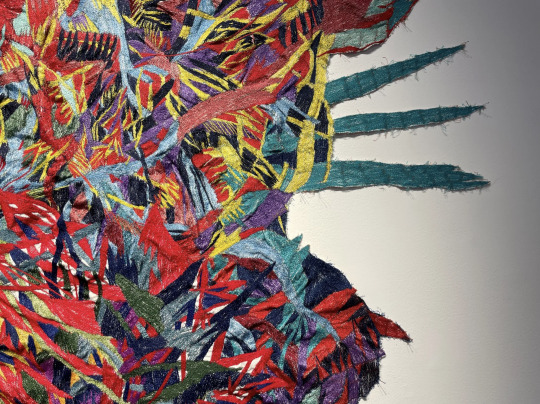
「絵のことは、絵に話しかければ」とあなたは言う (松岡亮 「誰かに愛されている空。 誰かを愛している空。」 SAI)
小金沢智 2023年12月4日 20:23
松岡亮さんの個展「誰かに愛されている空。 誰かを愛している空。」が、MYASHITA PARK(渋谷)3階のアートギャラリーSAIで開催されている。2021年11月の個展「暇で育つ。」以来、SAIでは2年ぶりとなるこの展覧会では、ミシンを用いた刺繍作品を中心としながら、ギャラリー空間の(ほぼ)始まりと終わりにはアクリル絵具を素材とする絵画作品が展示された。15点の刺繍と、56点の絵画、合わせて71点。後者のうち、1点はSAIのひと部屋の連続する二面にロール紙を貼り、まさしくその場で描かれた作品であり、55点は、その制作を終えた後のロール紙をさまざまなサイズに切って(それらも、同様にSAIで)描かれた作品である。
ここで、あぁ、と思うことは、つい、「刺繍作品」「絵画作品」と書き、また、作品の展示点数すらも記してしまったが、書いてみて、松岡さんの作品をそのような便宜的な分類に基づき整理することの不適切さを感じてしまう。キュレーターという職業柄、あるいは美術史という学問においても、作品の分類・整理は欠かせざる重要事項であるのだが、松岡さんの絵の前に立つとき、そういういつもの自分から距離をとってはどうかと促されている私がいることに気づかされる。誰から促されているのかというと、松岡さんからということではなく、松岡さんが描いた��制作した作品自体から促されている。
松岡さんの作品は、ある特定のテーマやコンセプトに基づき制作されるものではない。今回展示されている71点の作品は、2020年制作の作品が2点、2022年制作の作品が8点、それ以外の61点は2023年制作の作品であるが、会場で制作された56点を除き(点数だけ見れば非常にボリュームがあるが)、この展覧会のために制作されたというわけではなく、松岡さんが日々行っている絵を描くという営為の中で生まれた作品が、今回の機会に一堂に会した。ギャラリーに展示された作品以外にも、松岡さんの手元(というにはあまりに大きなものも含まれる)には多くの作品があり、そして日々生まれており、今回も、ギャラリーに持っていったものの空間の都合上展示することのできなかった作品があったとも聞き、すなわち、それらの作品は、何か(例えば、展覧会やアートフェア)のためにということではなく、松岡さんの毎日の生活の営みの中で自然とつくられている。生活の中で、「あなたの生活のコンセプトは? テーマは?」と殊更に聞かれる/聞くことがないのと同様、松岡さんにとってつくることは、生きることと切り離すことが「生理的な意味でできない」ものとして存在している。松岡さんにとってつくることは、テーマやコンセプト「以前」にある。
食べること、眠ること、家族や友人を愛することと同じ線上に、「絵を描く」ことがあり、だから松岡さんは、「絵を描くこと」を生活の上で優位に置かず、「絵を描くこと」によって自分を特別視せず、人との作品の比較もしない。もし、寝る間を惜しんで、生活を顧みず絵を描いている人がいるならば、「ちゃんと食べて、絵を描け」と松岡さんならば言うだろう。 今回の個展のステイトメントで、松岡さんはこう書いている。
何を見たのか? 何を知ったのか? 何を忘れたのか? 美しい旅だった。ゆっくりと動き出し。 少しずつ削ぎ落とされて。 自分自身に戻っていく。遊びの、遊びへ。 ただただ、描き。
仏教用語で「おのずからそうである」という意味で「自然」(じねん)という言葉があるが、松岡さんの作品から受けるのはそのような意味での「自然」である。「自ら然る」。絵とは、人の手によってつくられた人工的なものであるから、「おのずからそうである」ということは基本的にはないわけだけれども、できあがった松岡さんの絵は、それを強く感じるから不思議だ。作品の大小、素材・技法の違い、そういうものの如何を問わず、ここに絵が存在しているということ。「おのずからそうである」ものに対して、いったい、何を言うことができるだろう?
松岡さんの作品は、即興でつくられる。刺繍であればミシンによって、絵画であれば手によって(松岡さんは筆を用いない)、作品がどれだけ大きくても、小さくても、事前の下絵や構想はない。絵は、一本の線から、または点からはじまっていき、(松岡さんにとっての)然るべきタイミングで終わる。誰も、本人すらも、はじまり、過程、終わりを知らないまま、形態や色が次第に重なり、連なっていくようだ。最後の部屋に展示されていた大小55点のドローイングは、その豊穣な重なりと連なりの一端を示している。
SAIの入っているMIYASHITA PARKは、JRの線路にほぼ面しており、SAIには線路はもちろん渋谷の街の様相を見下ろすことのできる一室がある。おそらくそこは、展示によってはガラス面を閉じるなどのことができるのではないかと思うが、今回の展示では一部遮光されながらもほとんど開いたままとなっており、訪れた日中は陽の光が空間全体を満たすようにして作品に入り込みつつ、ガタンゴトンという電車の音もしばしば響いた。ふと目線を下げると、人工物の合間に植物が見える。線路脇ということであまり浸食すると危険であるということなのか、詳しい意図は不明だが、ある空間の中に植物を閉じ込めるようにして囲いができているのだが、しかし、その囲いから飛び出るようにして植物はその外側へと伸びてしまっている。電柱にも這っている。不思議なもので、それらの植物のありようと、松岡さんの絵の近さについて私は考える。まったく違うものではあるけれども、近いもののように見える。あの植物と、この絵と、何が違うのか? 本当に、違うのか? 植物も、絵も、食べることも、絵を描くことも、近い、もっと言えば、同じである、ということから始めることができるのではないか?
刺繍による作品は、ミシンでつくられた後、展示にあたっては木枠にセッティングされているのだが、一部、ふわふわと空気をはらんでいるというか、布が波打っているようなところがあって、それが呼吸のようで、またいい。絵が呼吸している。などと書くと、情緒的に過ぎるかもしれないが、松岡さんの絵は、情緒ということではなくて、絵の一点一点が、絵としてそこに存在しているという意味において、「呼吸」という言葉が、私にはとてもしっくりくる。それこそ、制作過程において松岡さんの身体/呼吸とともにつくられた絵が、その手を離れ、自ずと呼吸を始める。私には、松岡さんの絵は、水のようであり、光のようであり、風のようであり、ある場所で、ある場所を、たゆたい、ゆらめき、吹き抜ける。呼吸/リズムを伴いながら。
「絵のことは、絵に話しかければ」と松岡さんは言う。私が私として、あなたがあなたとして、絵と向き合う。作家に向き合うのではない。
松岡さんの作品は、今回のものもすべて、具体的なタイトルが付けられているものはない。《untitled》(無題)である。作品と見る人との関係というものは、実は、作家と離れたところでこそ、きわめて相互的なものなのだということを松岡さんは信じているように思う。そのとき、絵もまた、あなたを見��めているのかもしれない。光を受けて、呼吸しながら。
小金沢智
...........................
"You said, 'If it's about a painting, just talk to the painting.'" (Ryo Matsuoka, The Sky Loved by Someone. The Sky Loving Someone. SAI) Satoshi Koganezawa December 4, 2023, 8:23 PM
Ryo Matsuoka's solo exhibition, The Sky Loved by Someone. The Sky Loving Someone., is being held at the art gallery SAI on the third floor of MIYASHITA PARK (Shibuya). This exhibition, the first at SAI in two years since the November 2021 solo exhibition Growing in Idleness., focuses on embroidery works created with a sewing machine, while the beginning and end of the gallery space feature paintings using acrylic paint. The exhibition showcases 15 embroidery works and 56 paintings, for a total of 71 works. Among the paintings, one was created directly on-site by attaching rolled paper to two consecutive walls of a room at SAI, while the remaining 55 were created by cutting the rolled paper into various sizes after completing the larger work (also at SAI).
At this point, I catch myself thinking, "Oh," as I write about "embroidery works" and "paintings" and even list the number of works on display. However, upon reflection, I feel a certain discomfort in categorizing and organizing Matsuoka's works based on such convenient classifications. As a curator, or even within the study of art history, the classification and organization of works is a crucial task, yet when standing before Matsuoka’s paintings, I am prompted to distance myself from this usual approach. Who is prompting me? Not Matsuoka himself, but rather the works he has created.
Matsuoka's works are not created based on a specific theme or concept. Of the 71 works on display, two were created in 2020, eight in 2022, and the remaining 61 in 2023. With the exception of the 56 works produced on-site (a large number on its own), these works were not made specifically for this exhibition but emerged from Matsuoka's daily practice of painting. In fact, beyond the works displayed in the gallery, Matsuoka has many more works in his possession (some of which are quite large), and new ones are created daily. I also heard that some works, despite being brought to the gallery, could not be displayed due to space limitations. This reinforces the idea that Matsuoka’s works are not created for any particular purpose (such as an exhibition or art fair), but rather arise naturally from his everyday life. Just as we do not ask, “What is the concept or theme of your life?” Matsuoka’s act of creating cannot be separated from living—it is something that cannot be “physiologically” detached. For Matsuoka, creation exists prior to any theme or concept.
Just as eating, sleeping, and loving family and friends are a part of life, so is "painting." Therefore, Matsuoka does not place "painting" in a position of superiority in his life, nor does he view himself as special because he paints. He also refrains from comparing his works to those of others. If there were someone who painted while sacrificing sleep and neglecting their daily life, Matsuoka would likely say, “Eat properly, and then paint.”
In his statement for this solo exhibition, Matsuoka writes:
What have I seen? What have I learned? What have I forgotten? It was a beautiful journey. Moving slowly, little by little, things are stripped away, and I return to myself, to the play of play. I just paint.
There is a Buddhist term, "jinen," which means "to naturally be as it is," and this is the sense of "nature" that I get from Matsuoka’s works. "Naturally so." Though a painting is an artificial creation made by human hands and does not naturally “exist,” Matsuoka’s finished works give off such a strong sense of “naturally being” that it feels mysterious. Regardless of the size of the work or the differences in materials or techniques, the fact remains that the painting is there. And what can one really say about something that “naturally is”?
Matsuoka’s works are created spontaneously. Whether it's embroidery using a sewing machine or painting by hand (Matsuoka does not use brushes), there are no preliminary sketches or plans, no matter the size of the work. His paintings begin with a single line or dot and continue until what he feels is the right moment to finish. No one, not even Matsuoka, knows how they will begin, progress, or end, but as the shapes and colors gradually accumulate and connect, they form something. The 55 drawings displayed in the final room offer a glimpse into this abundant layering and connection.
MIYASHITA PARK, where SAI is located, faces the JR train tracks, and one of the rooms at SAI offers a view overlooking the tracks and the city of Shibuya. While the glass walls could probably be covered depending on the exhibition, for this exhibition, they were mostly left open, allowing sunlight to fill the space, while the sound of passing trains frequently echoed. Looking down, I noticed plants growing between the artificial structures. Perhaps due to safety concerns, since the space is close to the tracks, the plants are enclosed, but some have grown beyond the barriers, creeping along utility poles. Strangely, this scene reminded me of the affinity between Matsuoka’s paintings and these plants. Although entirely different, they seem close. What really distinguishes these plants from Matsuoka's paintings? Are they truly different? Could it be that plants, paintings, eating, and creating are all close—perhaps even the same?
The embroidery works, while framed for the exhibition, have parts where the fabric ripples like waves, almost as if it’s breathing—this too is beautiful. To say "the painting is breathing" may sound overly sentimental, but it is not about emotion. In the sense that each of Matsuoka’s paintings exists as a painting, the word "breathing" feels apt. The painting, created alongside Matsuoka's body and breath, begins to breathe on its own once it leaves his hands. To me, Matsuoka's paintings are like water, light, and wind, drifting and shimmering, passing through a space. They carry a rhythm, a breath.
Matsuoka says, “If it’s about a painting, just talk to the painting.” I face the painting as myself, and you as yourself, not facing the artist.
Matsuoka's works, including those in this exhibition, are all untitled. He seems to believe that the relationship between a work and its viewer is, in fact, deeply reciprocal, away from the artist. At such moments, the painting might be gazing back at you, breathing, bathed in light.
Satoshi Koganezawa
................
松岡亮 「誰かに愛されている空。 誰かを愛している空。」 2023年12月2日(土)〜2023年12月24日(日)無休 SAI / 渋谷区神宮前6-20-10 RAYARD MIYASHITA PARK South 3F https://www.saiart.jp/
小金沢智 https://www.koganezawasatoshi.com/
0 notes
Text
youtube
【PC Engine】 Winds of Thunder / Lords of Thunder | ウィンズ オブ サンダー ~Intro/Demo
// Music: Groove King / Satoshi Miyashita | 宮下智
// MiSTer FPGA // TurboGrafx16 core // Y/C Composite // Sony KV-13TR20 CRT // Dolby Headphone
0 notes
Text
Kankyo Ongaku: A Brief History of Japanese Ambient Music
Happy Easter everyone. The @lightintheattic compilation Kankyo Ongaku is a wonderful primer for Japanese ambient music. Read about it here:
It transpires that I was ahead of the curve. Well, there’s a first time for everything.
Two years after my trip of a lifetime to Japan in 2017, all manner of Japanese music and culture is bubbling to the surface. It’s sakura time in the UK and my other half has a matching handbag. Every time I go into the old Foyles book shop in London, there’s a new display of featured Japanese literature. The…
View On WordPress
#Alva Noto#Brian Eno#Erik Satie#Fumio Miyashita#Haruomi Hosono#Hiroshi Yoshimura#Japan#Light In The Attic#Masahiro Sugaya#Ryuichi Sakamoto#Satoshi Ashikawa#Toshi Tsuchitori#Visible Cloaks#Yasuaki Shimizu#Yellow Magic Orchestra#Yoshiaki Ochi
1 note
·
View note
Photo
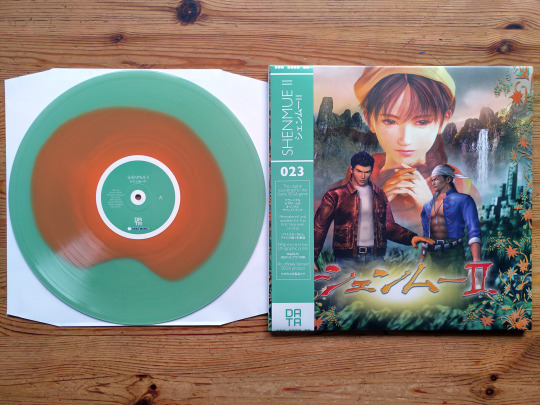
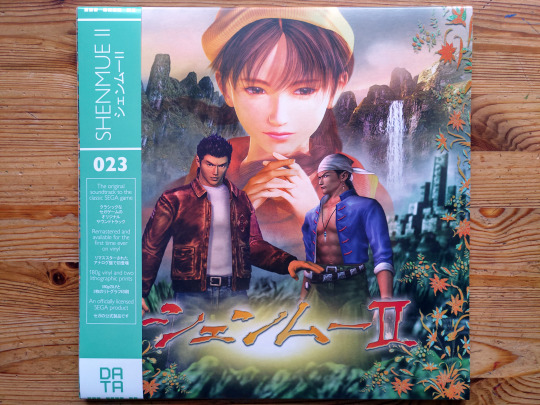
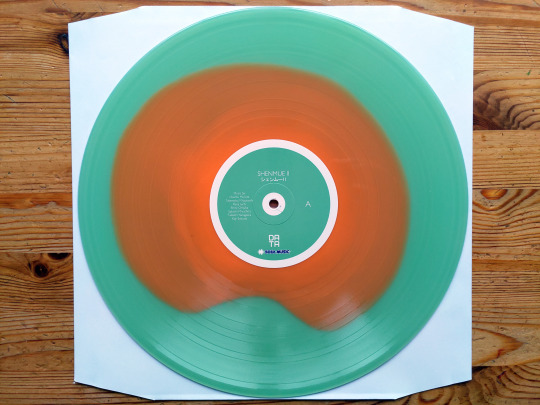

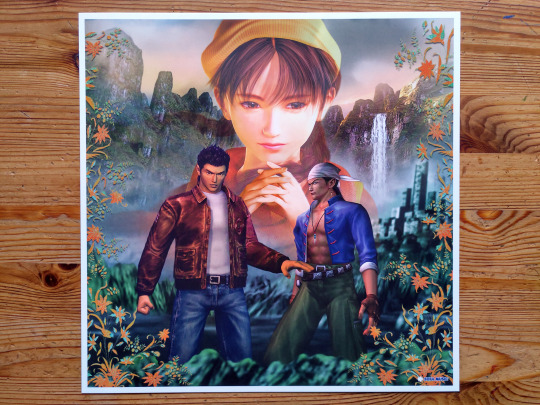
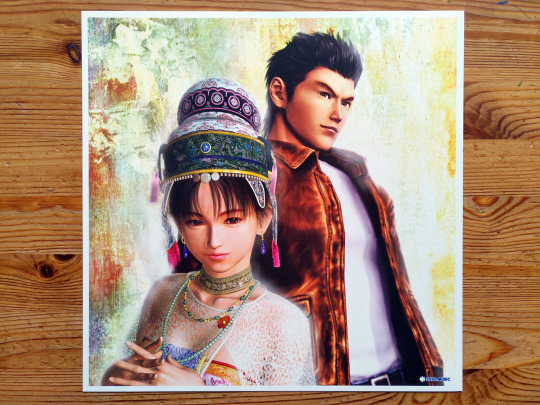

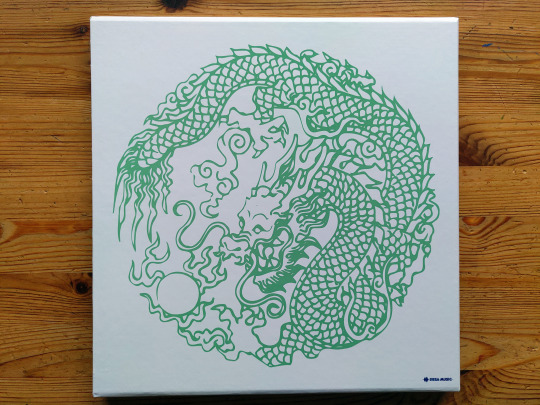
Various Artists - Shenmue II | Data Discs | 2020 | Orange-In-Green Translucent
Slipcase in the lower pics was made available separately and was made to house this release as well as Data Discs' 2015 Shenmue LP release
#osamu murata#takenobu mitsuyoshi#ryuji iuchi#shinji otsuka#koji sakurai#takeshi yanagawa#satoshi miyashita#shenmue ii#data discs#vinyl#colored vinyl#lp#music#records#record collection#vgm#video game music#soundtrack#shenmue#sega#yu suzuki
37 notes
·
View notes
Text
Happy birthday Ai Miyashita!
*Literally post a genderbend Pomu x Ai fanart*

#ayumu uehara#ai miyashita#genderbend#love live#nijigasaki school idol club#aipomu#aipomu > yuupomu shut the fu#this is sooo Bireena coded#famitsu ayumu is back babyyy!!!#satoshi uehara
4 notes
·
View notes
Text
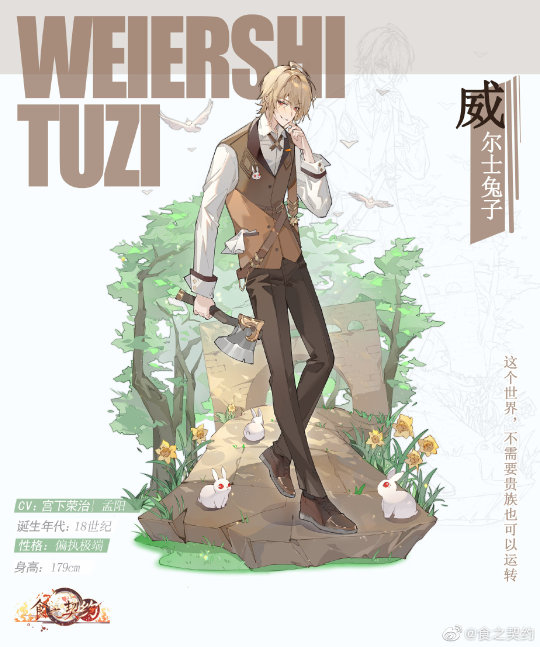
SR-Welsh Rabbit
"This world can function without aristocrats."
Height: 179 cm
Birth Year: 18th Century
Trait: Biased to the extreme
CN VA: Meng Yang
JPN VA: Miyashita Satoshi


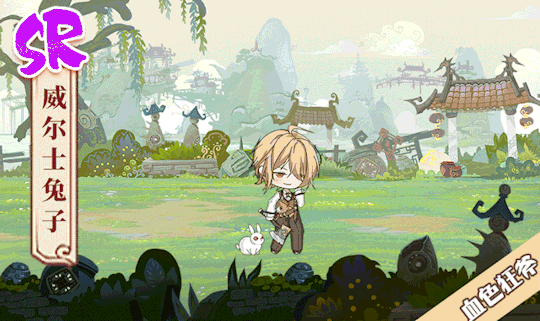

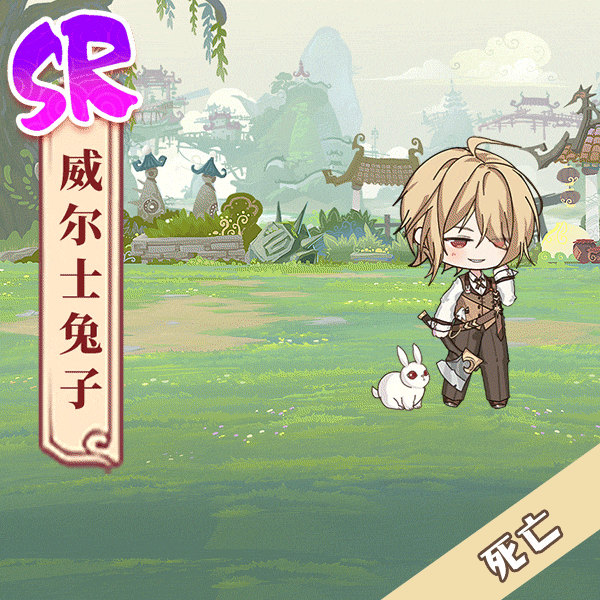
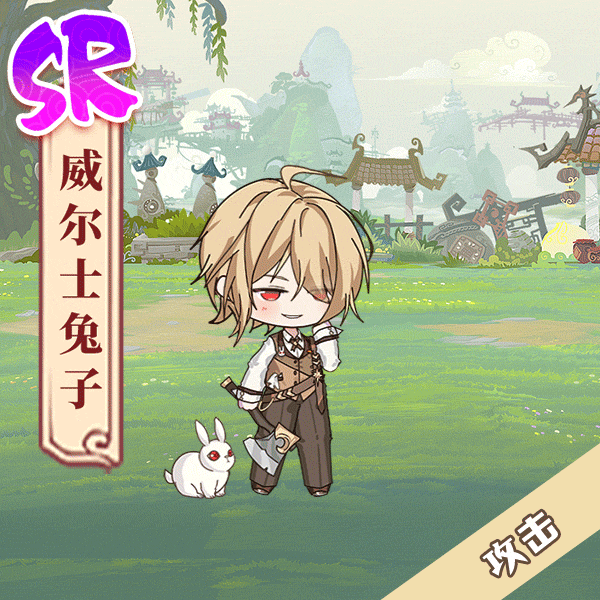


39 notes
·
View notes
Text
Brave: Gunjou Senki (JM, 2021) (Sub. Esp)

DESCARGAR O VER ONLINE AQUÍ
Título: Brave: Gunjou Senki País: Japón Duración: 115 min. Género: Acción, historia, misterio Fecha de estreno: 12 de marzo, 2021 Dirección: Motohiro Katsuyuki Guion: Yamamoto Toru, Yamaura Masahiro SINOPSIS Los estudiantes, incluyendo a Nishino Aoi, participan en clases y actividades deportivas en una prestigiosa escuela de secundaria. Aoi es un miembro del club de tiro con arco de la escuela. Practica el tiro con arco con esmero y no socializa mucho con los demás estudiantes. Su amiga de la infancia, Seno Haruka, también es miembro del club de tiro con arco, pero ella se preocupa por Aoi. Un día, un trueno golpea los terrenos de la escuela. Después de eso, la vida cotidiana de los estudiantes cambia drásticamente. Muchos samuráis descienden a los terrenos de la escuela. Parece que toda la escuela ha viajado en el tiempo hasta el período Sengoku. Para empeorar las cosas, se dan cuenta de que están en el momento justo antes de que tenga lugar la Batalla de Okehazama. CAST Arata Mackenyu como Nishino Aoi Yamazaki Hirona como Seno Haruka Miura Haruma como Matsudaira Motoyasu Matsuyama Kenichi como Oda Nobunaga Suzuki Nobuyuki como Matsumoto Kota Watanabe Keisuke como Fuwa Rui Hamada Tatsuomi como Yoshimoto Manjiro Suzuki Jin como Kurokawa Toshiaki Fukuyama Shodai como Sagara Ren Iijima Hiroki como Naruse Yuta Osada Takuro como Takahashi Tetsuo Mizutani Kaho como Suzuki Asami Adachi Suguru como Fujioka Yukio Miyashita Kanako como Imai Keiko Kusano Taisei como Kogure Satoshi Ideda Junya como Kinoshita Tokichiro Takahashi Mitsuomi como Honda Masanobu Ichikawa Tomohiro como Sano Akira Hoshino Rika como Mouri Airi
TRÁILER: https://www.youtube.com/watch?v=GnU8O8F1QIk
#brave#jmovie#brave gunjou senki#arata mackenyu#miura haruma#yamazaki hirona#matsuyama kenichi#suzuki nobuyuki#watanabe keisuke#película#proyectos terminados#sub. español
19 notes
·
View notes